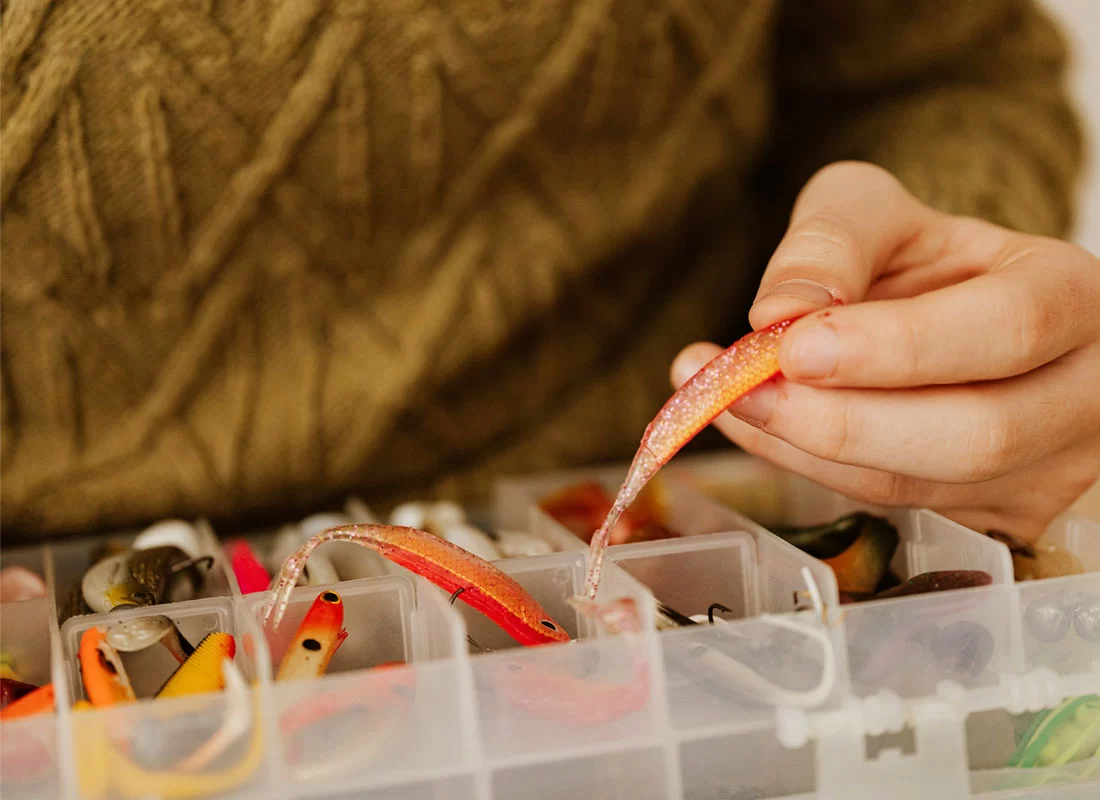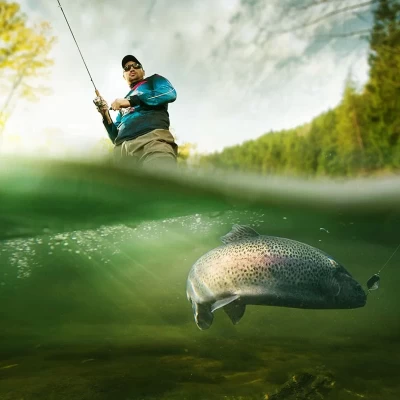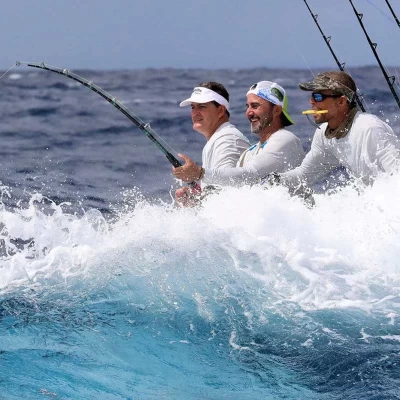In the world of sportfishing, anglers often align themselves with one of two approaches: bait fishing or lure fishing. While this division is both arbitrary and unproductive, it undeniably shapes the perspectives and practices of many anglers. For bait fishers looking to explore the realm of lures, it can feel like they’re venturing into unfamiliar territory.
Though lure fishing typically requires a different set of techniques and gear, the most skilled lure anglers tend to apply principles they learned from bait fishing. Essentially, the two camps have far more shared ground than most realize.
In this guide, we’ll outline a beginner-friendly introduction to lure fishing, demonstrating how bait fishing principles can easily transition into lure use, along with tips on selecting the right lures and affordable gear recommendations to help you start your lure fishing journey in Türkiye.
Bridging the Divide
Contrary to popular belief, bait and lure anglers are not distinct factions. Most experienced lure fishers began their journey using bait, and many still enjoy bait fishing from time to time.
The notion that one approach is superior, more effective, or more skill-intensive than the other is purely subjective. Someone claiming bait fishing outshines lures in effectiveness might struggle to defend that point against european bass enthusiasts, who know the species’ fondness for lures all too well. Similarly, those dismissing bait fishing as simplistic likely haven’t wrestled with Black sea bass using a centerpin reel and finely presented live baits.
Ultimately, angling is angling—regardless of the method or gear involved. Treating bait and lure fishing as entirely separate disciplines is counterproductive. Fishing is better understood as a continuous learning experience, filled with opportunities for exploration and growth.
Catching Your First Fish on a Lure
If lure fishing wasn’t a part of your upbringing (as it was for many of us), don’t fret, the fundamentals are easy to grasp, even on your own. For absolute beginners, we recommend starting with bait fishing; it lays a solid groundwork for almost every technique you’ll use with lures.
However, if you’re already an avid bait fisher eager to master the art of lure fishing, you’re in luck, you’ve already done much of the prep work! Whether you’ve been targeting bream, whiting, or flathead in estuaries; bobbing for cod and flounder with crayfish; or drifting pilchards in the surf for bluefish and black sea salmon, you’ve already honed critical skills like locating fish.
Additionally, your experience interpreting line tension and movement, alongside casting accuracy and proper knot-tying, will serve you well when transitioning to lure fishing. Catching your first fish on a lure may feel like the greatest hurdle, but once it’s accomplished, progress comes naturally through experimentation and practice.

Choosing the Right Lure
The key to successful lure fishing is determining what type of live prey your target fish are after. Once you’ve figured that out, selecting a lure that mimics this prey becomes straightforward—it’s simply a matter of presenting it effectively.
If you’ve previously worked with live bait like large crickets for lake trout or saltwater yabbies for estuary bream and whiting, you might find soft plastics like silicone creature baits to be a logical transition. That’s because most lures are designed to replicate live prey in appearance and motion. However, if your bait choice involved dead or cut bait, you’ll need to identify the live prey your target species feeds on in that environment.
Observation is critical at this stage. Look around for hints—finger-length prawns jumping at the surface might suggest a lightweight prawn-profiled lure rigged on a light jighead. If sardines or anchovys are darting through surf waves, an 20g or 30g jig would be perfect for enticing bluefish and salmon that hunt these smaller fish.
If visual cues are lacking, some research into your target species’ dietary habits and behavior can fill the gaps. Whatever lure you pick, remember the golden rule of lure fishing: match the hatch! By mimicking the prey your target species naturally chases, you’ll dramatically improve your chances of success.
What Tackle is Needed for Lure Fishing
Lure fishing is commonly (but not exclusively) practiced using braided lines paired with graphite fishing rods, a combination chosen for practical reasons.
Braided lines, unlike the more elastic monofilament lines often favored by bait anglers, do not stretch. This lack of stretch enhances sensitivity, allowing anglers to detect bites more easily and feel the lure’s interaction with the environment, such as when it contacts the bottom or structure.
Additionally, braided lines have a smaller diameter, which improves both casting distance and precision—key elements in successful lure fishing. For beginners, a highly recommended option is the J-Braid Expedition, a durable and visible braided line that remains easy to handle despite its slim profile.
Graphite rods complement braided lines effectively, offering a stiffer and lighter alternative to fiberglass rods typically used in bait fishing. These qualities enhance feedback by transmitting vibrations from the line directly to the rod, making it easier to interpret bites and other subtle movements.
Moreover, graphite rods allow precise lure manipulation through rod movement, which is harder to achieve with the flexibility of a fiberglass rod paired with stretchy monofilament. If you’re just starting out, the Ryuji Matrix 2.65M 4-35 gr and Fujin ProCast 265cm 5-28 gr are affordable yet high-quality options worth considering.
Another critical component of a lure fishing setup is the fishing leader, often referred to by bait anglers as the “trace.” Made from a short length of monofilament or fluorocarbon, the leader is tied between the braid and the lure and serves several functions.
First, because braided lines are opaque, leaders help make the connection to the lure less visible to fish. Second, they provide abrasion resistance at the rig’s most vulnerable point; while braid is incredibly strong for its thickness, it’s prone to breakage when rubbed against rough surfaces under tension.
Finally, having a leader adds a small but valuable amount of shock absorption to your setup, mitigating impact stress. For an excellent all-purpose fluorocarbon leader material that pairs seamlessly with J-Braid, try Seaguar Blue Label fluorocarbon.
To assemble your rig effectively, you’ll need to learn at least one reliable leader connection knot. Popular choices include the Double-Uni knot, Improved Albright knot, and FG knot. Mastering one of these knots will ensure your setup is both strong and efficient.
Extra Accessories
For your foray into lure fishing, along with specialized tackle, there are a few essential accessories you’ll want to have on hand.
Experienced lure anglers typically carry a variety of lures, allowing for quick changes when one setup isn’t delivering results. Compact tackle trays, designed to fit in a backpack or waist bag, are invaluable. They keep your lures dry and organized, preventing tangling or damage. We recommend tackle boxes with various depths, compartments and shapes to suit different storage needs.
If you’re working with plenty of soft plastic lures, the Fubelo Inventory fisihng bags and Pandora Tackle Box models offers a convenient and streamlined solution for storing and carrying them during fishing trips.
Additional tools like split-ring pliers and braid scissors are indispensable. These handy fishing accessories enable you to rig, adjust, or retrofit your terminal tackle effortlessly, enhancing the overall ease and enjoyment of lure fishing.
You’ll also need a reliable way to transport your gear. The new Fujin Back Pack delivers practical storage options at a great price. Whether you opt for the Hip Bag or Backpack—depending on how much equipment you plan to carry—both are perfect for shore anglers. If you’re heading out on a boat, the Shimano Yasei Boat Bag is a fantastic choice for keeping all your gear neatly together, whether it’s for your vessel or someone else’s.
In conclusion, building confidence with lures may take some time, but you’ll likely find that lure fishing shares many similarities with bait fishing. By viewing lures as a natural progression in your fishing journey rather than an entirely new approach, you can leverage the valuable skills you’ve gained from bait fishing. This transition will ultimately help you become a more skilled and versatile lure angler in Türkiye.
We wish you the best of luck and plenty of success out on the water!








